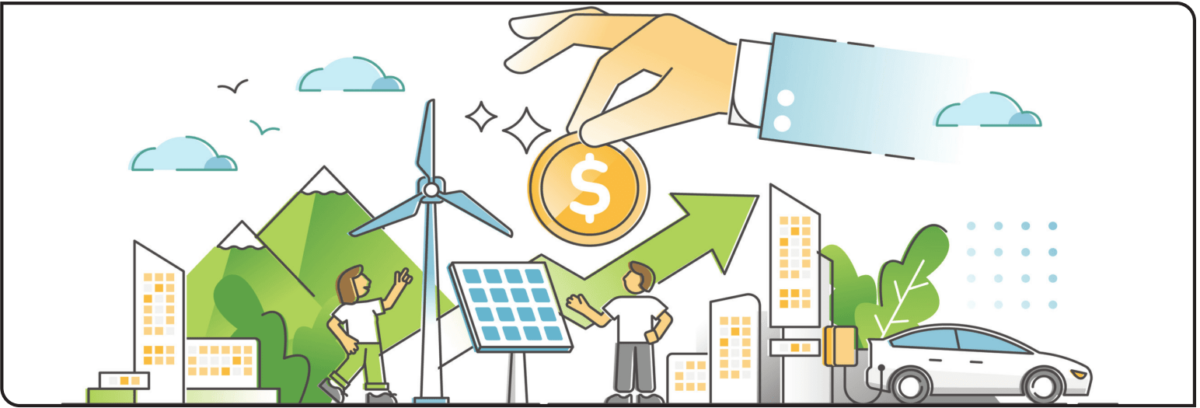U.S. government spending is often subject to the political climate, with the budgets of federal agencies fluctuating from one Congress to another. This requires nonprofit organizations to keep a close eye on current events, study recent funding trends, and take note of which agencies are receiving money and what types of programs, organizations, and collaborations they are likely to support.
Now that President Joe Biden has signed the Inflation Reduction Act into law, the federal government will make major investments in healthcare, domestic energy production, and the environment. More than a dozen federal agencies will receive funding, with the majority of the direct appropriations going to three of them: the U.S. Department of Agriculture (USDA), the U.S. Environmental Protection Agency (EPA), and the U.S. Department of Energy (DOE). These agencies will all move quickly to implement the provisions of the legislation.
This presents opportunities. Nonprofits should brainstorm about possible projects and programs that may pique the interest of one or more of the federal agencies. “Innovation has never been more important for environmental science,” according to EPA’s website. This sentiment extends to other agencies as well, where innovation grants, prizes, and programs are on offer.
Federal agencies often color outside the lines, funding projects and programs that appear to best serve the community rather than adhering to a set of strict criteria. They emphasize flexibility in funding and are open to considering a wide range of proposals. These agencies also frequently collaborate with one another, particularly on large-scale efforts (e.g., the National Drought Resilience Partnership takes in more than a dozen agencies).
The three grants that follow illustrate these ideas. Each was awarded by a different federal agency, each one pointing to a receptive government culture. Maybe they will plant a seed for a proposal that has promise at your own organization, whether for a first-time submission or an innovative program or partnership.
1. In 2007 the EPA awarded $50,000 to The Artist Boat, a nonprofit on Galveston Island on the Texas Coast, for environmental education. The Artist Boat used the funds to instruct middle school students and teachers about the Coastal Heritage Preserve in Galveston County. The organization combines climate science and art instruction together with hiking and kayaking—an entertaining way of promoting community awareness and preservation of the marine environment.
(In August 2022 EPA awarded 34 organizations more than $3 million in funding for projects under the Environmental Education Grants Program to raise awareness and advance environmental education. Most of the recipients were colleges, universities, and environmental organizations.)
2. In 2012 the Department of Housing and Urban Development (HUD) awarded $1.5 million to Portable Practical Educational Preparation, Inc. (PPEP), an educational and social service organization based in Tucson, Arizona. This nonprofit got its start in 1967 as a one-man operation working out of a school bus, offering English language instruction and other practical skills to immigrant farmworkers. Since then PPEP has experienced remarkable growth, currently employing a staff of more than 500. The organization offers an unusually wide range of services, such as counseling, health and housing services, employment and vocational training, and services for the developmentally disabled. PPEP collaborates with multiple public agencies at all levels of government.
3. In 2015 USDA Rural Development in Honesdale, Pennsylvania awarded the Wayne Economic Development Corporation (WEDCO) a $50,000 Rural Business Enterprise Grant to develop the Stourbridge Project, a business incubator that features advanced technology such as music mixing software, 3-D printing, and state-of-the-art media and video equipment. This project also received state funding, along with support from two other regional economic development agencies. WEDCO is a nonprofit corporation made up of local businesses that collaborate with state, county, and municipal government to promote economic development.
With public arts funding in short supply, it makes good sense to consider ways of incorporating one or more components of the arts into a larger development. They add cachet to a project, which attracts media attention and community support. Public art such as murals and sculpture often get funded in a similar way, whether by a city or state transportation agency, or by a Percent-for-Art ordinance that some cities and states require for capital projects.
Government officials rely on nonprofit organizations to deliver publicly financed services, and they look to them for a more detailed understanding of the issues and for help in implementing policy. Your proposal idea may be one that an agency would like to support, even hold up as a model.
One EPA program worthy of special mention: Environmental Justice (EJ). In recent years, the EJ movement has received increasing attention from the media, academics, activists, and public officials, and there is every reason to believe that this will continue. The EJ program offers numerous funding opportunities and encourages collaborative community efforts. If your project or program does not qualify for funding on its own, an innovative partnership may well make the difference.

 420-737-921-492
420-737-921-492 410-245-0398
410-245-0398 647-969-8866
647-969-8866




 www.SSutton-and-Associates.com
www.SSutton-and-Associates.com